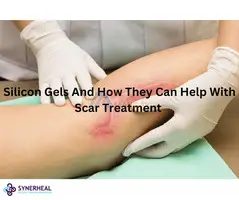Description
Collagen is the most abundant protein in the human body and is a major component of the extracellular matrix (ECM). It is comprised of three polypeptide chains that are rich in hydroxy-proline amino acids and are twisted together into a triple-helical structure. Over 20 different types of collagens have been identified in humans; the main types are type I, II, and III; and together they make up 80% of the body’s collagen. Type I and III are important for wound healing.
In a healing wound, a cascade of events occurs and is broken into what is known as the phases of wound healing. These include platelet accumulation, inflammation, fibroblast proliferation, cell contraction, angiogenesis and re-epithelialization. This cascade ultimately leads to scar formation and wound remodeling. Collagen plays an important role in each of these phases of wound healing due to its chemotactic role. It attracts cells such as fibroblasts and keratinocytes to the wound. This encourages debridement, angiogenesis and re-epithelialization. A chronic wound is stalled at one of these healing stages. This usually occurs during the inflammatory phase and is linked to elevated levels of matrix metalloproteinase (MMPs) in the wound. In normal wound.
Collagen dressings are different from normal dressings, Collagen dressings are the new age dressing for wound management, the difference between traditional dressing and collagen is the fact that the collagen present helps the wound granulate faster as it is made of the same protein element our skin is made of, hence this helps in rapid regeneration of skin. Purity of collagen is the most important factor to consider.
They work as It attracts cells, such as fibroblasts and keratinocytes, to the wound, which encourages debridement, angiogenesis, and epithelialization. Collagen dressings stimulate new tissue growth and encourage the deposition and organization of newly formed collagen fibers and granulation tissue in the wound bed.
The type of collagen helps in wound healing is There are three types of Collagens that are native to the body and to the wound healing process Type I: The most abundant of all three collagen types. It is the dominant constituent, occupying more than 90% of the tissue and is the most used collagen in the wound healing process. Synerheal pharmaceuticals exclusively uses type 1 collagen in all our products.
It has been used widely within wound care, and in multiple forms for different reasons. It had become apparent that chronic wounds were trapped in the inflammatory phase of wound healing and would not progress to healing without resolving inflammation. During the inflammatory phase, a wound attempts to cleanse itself of all non-viable tissue and debris by utilizing digestive enzymes to break down non-vital tissue and exudate to wash away the debris.
Collagen wound dressings are suitable for use on necrotic or granulating wounds (that is dead tissue and healing wounds), on wounds with minimal-to-heavy exudates (i.e., watery discharge and or pus). Wounds which are chronic and non-healing may also benefit from collagen dressings which can jump-start the healing process.
Best to use our collagen dressings when,
Wounds that have 'stalled' in the healing phase
- Partial thickness burns (1st and 2nd degree)
- Diabetic ulcers (foot, leg, heels etc.)
- Pressure ulcers (bedsores etc.)
-Venous ulcers
- Skin graft donor sites
- Dehisced surgical wounds
- Infected wounds, providing the infection is managed locally or systemically.
The frequency of dressing changes will vary depending on the wound and brand, collagen by SynerHeal pharmaceuticals have patent nano technology that cuts down the molecular size of collagen and helps in more rapid absorption compared to other products in the market. Hence ranges from daily to every 4 days depending on the exudate and size of the wound.
Do Not Use collagen dressings in the following circumstances:
1.Third-degree burns
2.Wounds covered in dry eschar (dead and dry tissue or skin)
3.Patient sensitivity to bovine derived products



























